How to do an overnight bus trip to Kanazawa from Tokyo【Photos】 – Part 2
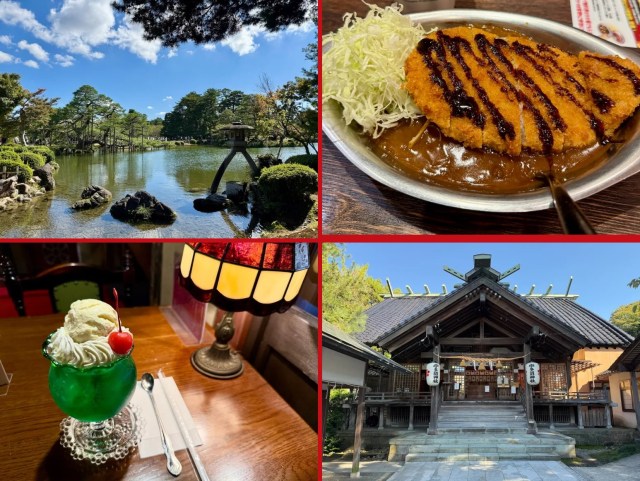
Historical tea houses, throwing stars, retro cafes, and Kanazawa’s special curry, all without any need to book a hotel.
In Part 1 of our article covering his journey from downtown Tokyo to Kanazawa, the capital of Ishikawa Prefecture on the Sea of Japan side of Japan’s main island of Honshu, our Japanese-language reporter Masanuki Sunakoma boarded the KB Liner overnight bus at 11:15 p.m. The bus then whisked him to Kanazawa Station, arriving a little before 7:30 in the morning and giving him plenty of time to get a rental bike, hit up a local onsen hot spring bath, have a fantastic sashimi bowl meal at the foodie-famous Omicho fish market, and stroll down the Hakuchoro pedestrian promenade while admiring the statues on display.
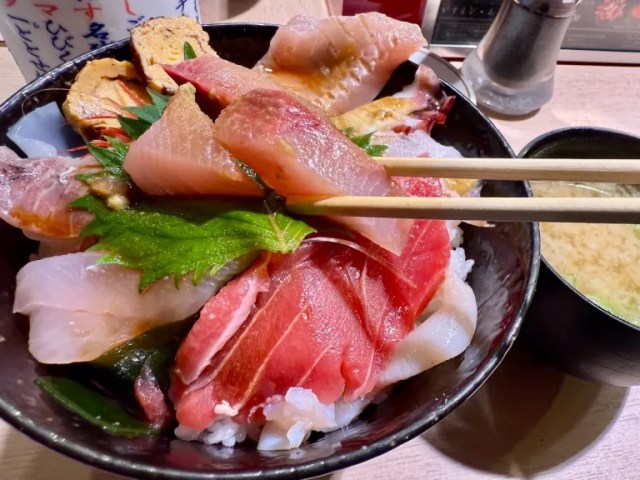
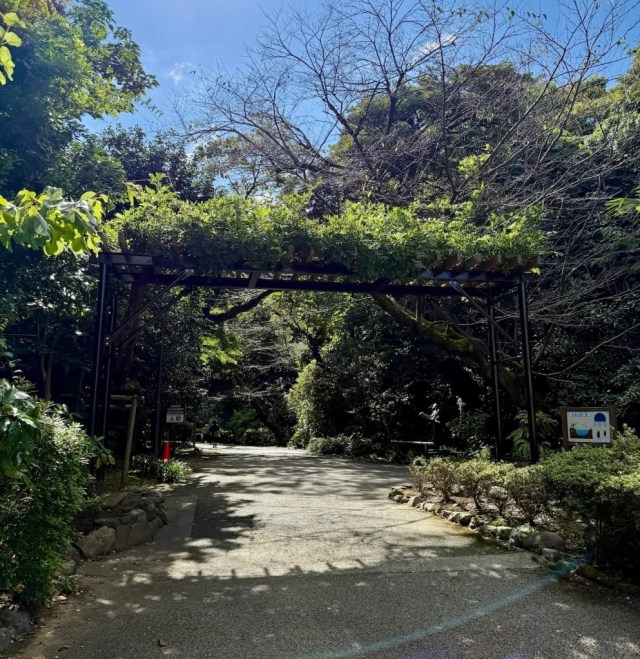
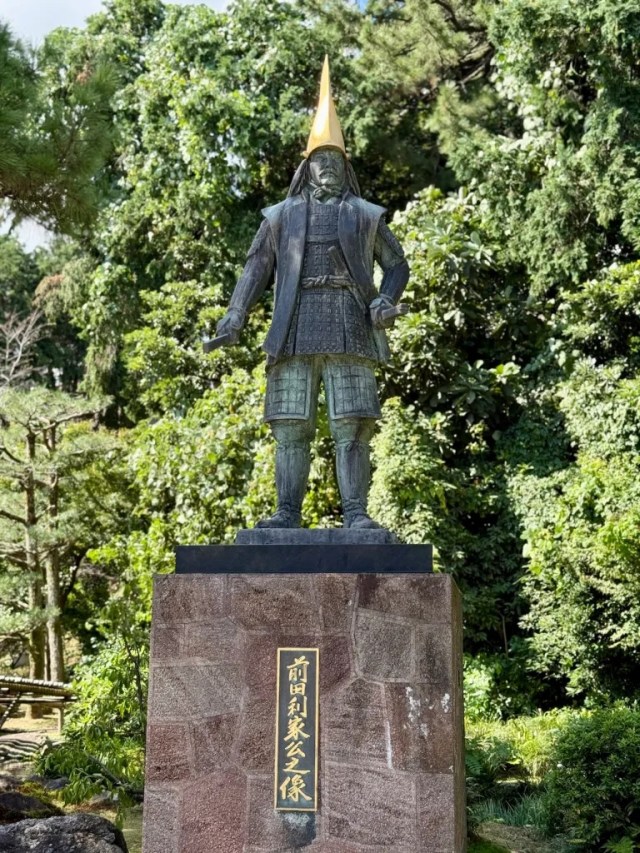
Not far from the end of Hakuchoro is the entrance to Kanazawa’s biggest and most beautiful attraction, Kenrokuen.
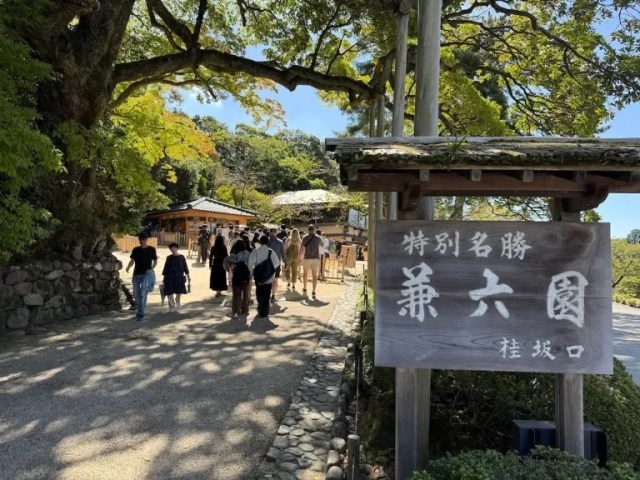
This garden was originally part of the private estate of the lords of the Maeda samurai clan which ruled the area during Japan’s feudal period. Since 1871, however, Kenrokuen has been open to the public for a modest admission fee (320 yen [US$2.15] for adults), which is a bargain for what’s widely held to be one of Japan’s three most beautiful gardens.
▼ The kotojitoro, a unique stone lantern that stands on two legs, is practically a local celebrity, with visitors lining up to take its photo.
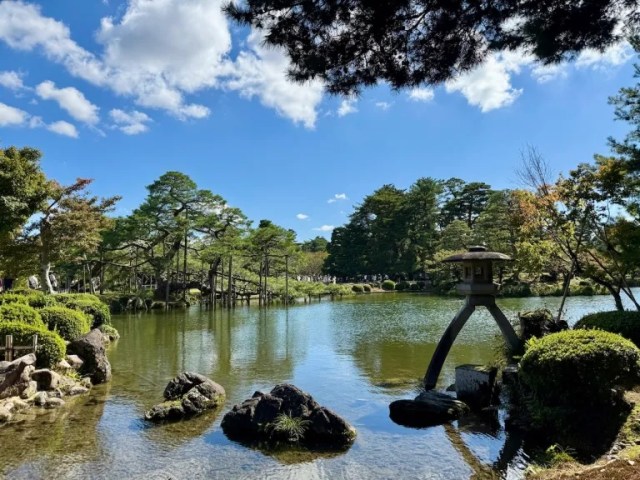
After leaving Kenrokuen, Masanuki decided to do some exploring, and he quickly stumbled across Bushoan, a souvenir shop specializing in samurai and ninja-themed items.
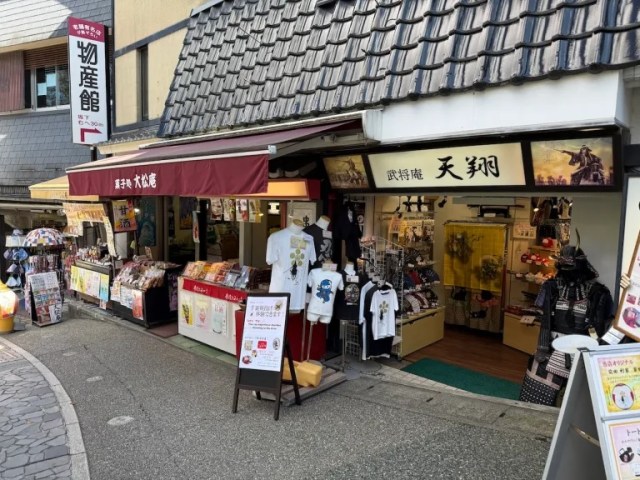
▼ Kenrokuen to Bushoan
Shopping isn’t the only form of entertainment Bushoan offers, though – they also have a shuriken throwing range!
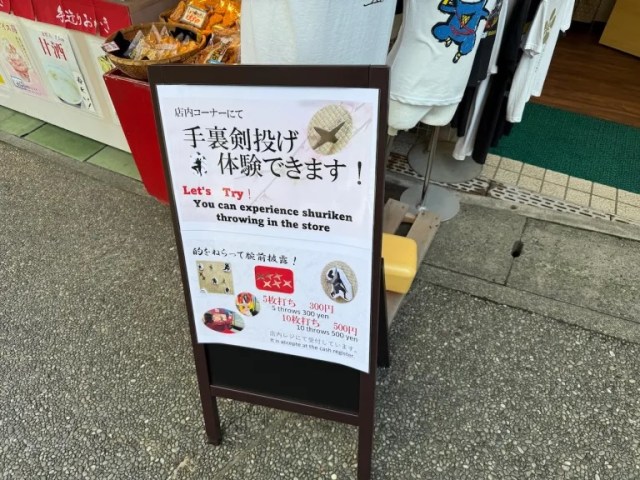
300 yen gets you five ninja stars to throw, or if you’re a volume savings-minded shinobi you can opt for ten throws for 500 yen.
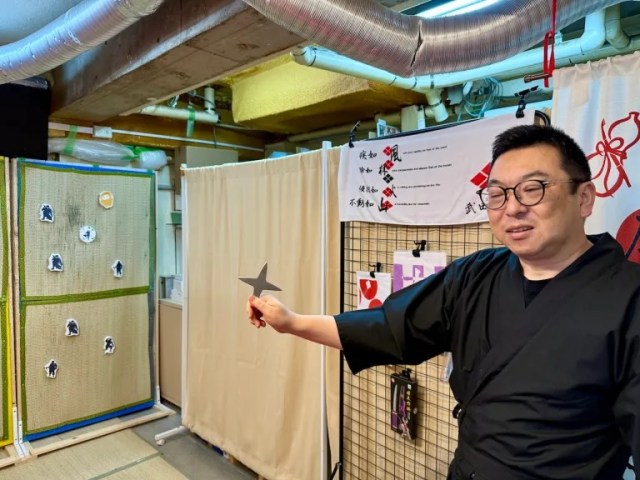
After some brief pointers from the staff (for best results, hold a point of the shuriken between your thumb and index finger, then throw with a vertical/overhand motion), it was time for Masanuki to channel his inner shinobi.
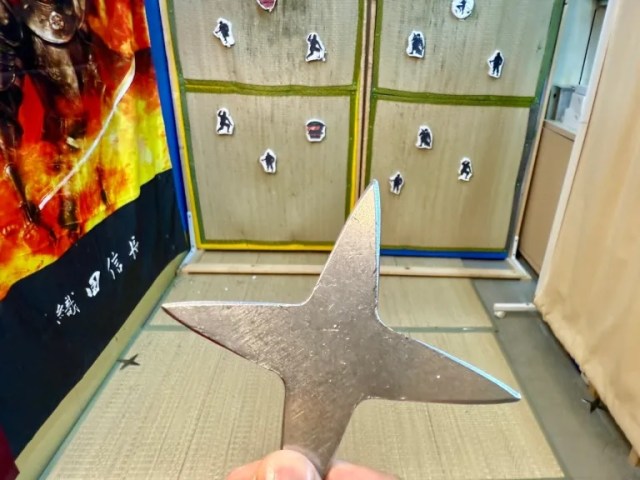
These aren’t plasticky toys, either, but actual sharp, metal shuriken, which bury themselves into the target backing with a satisfying impact.
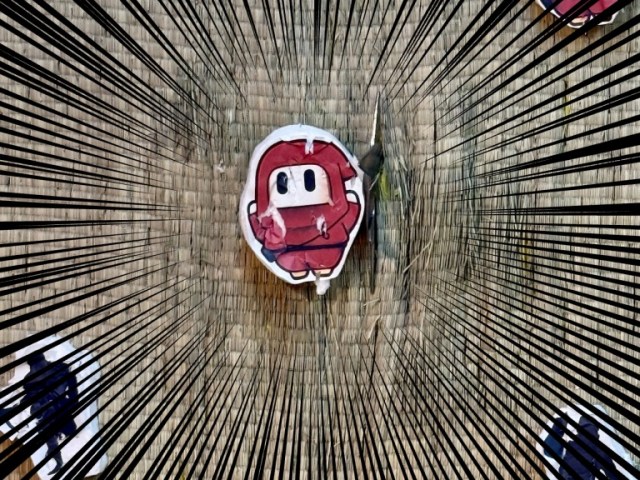
If you manage to hit one of the ninja, you win a prize of a snack pack and a 20-percent off coupon for the shop’s merchandise, so you’ll want to do your shuriken tossing before you do your souvenir buying. The staff even cut Masanuki a break by giving him the prize for almost-but-not-quite hitting the target.
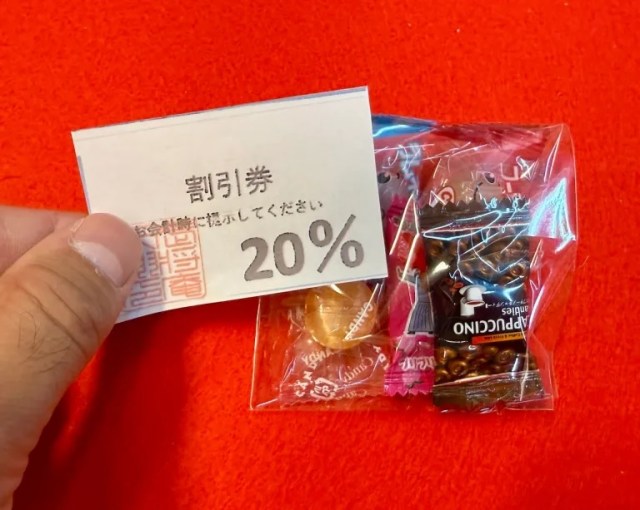
Along with Omicho Market and Kenrokuen, the Higashi Chaya historical district makes up Kanazawa’s big three travel attractions.
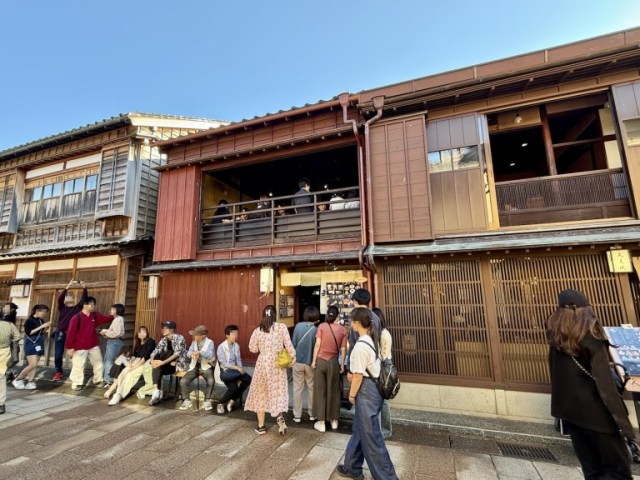
Chaya literally means “tea shop,” and several streets in the neighborhood retain their traditional chaya exteriors. In actuality, back in the feudal era “chaya” was often a euphemism for establishments that made more of their money through providing alcoholic beverages or female companionship, but nowadays you actually can get tea in Kanazawa’s former chaya, as many of them now house cafes.
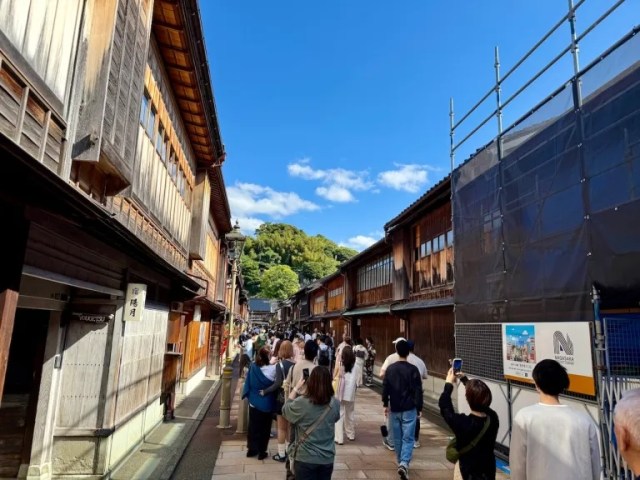
As lovely as their atmospheres are, though, the most famous chaya cafes tend to have long lines. So Masanuki was very happy when he turned down one of the neighborhood’s side streets and found Kingyoan, an apparently less-famous cafe where he could get a seat right away.
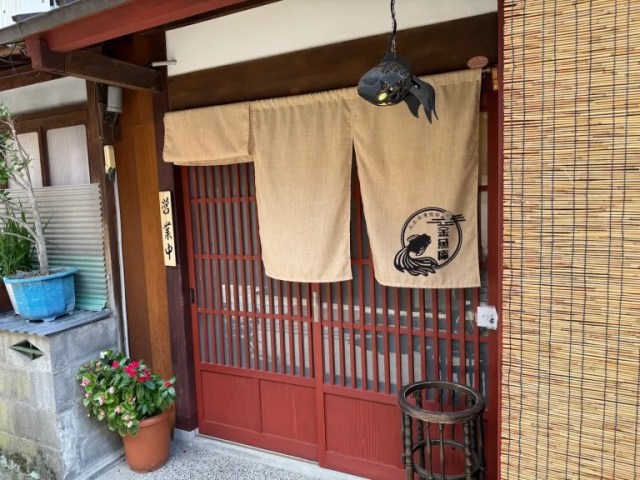
▼ Kingyoan interior
本日店内ゆったりとしています
タイミング次第では、貸切状態でお楽しみいただけますので是非ご来店ください! https://t.co/H6NkyI8ErX pic.twitter.com/lvFtz9PKxS— 大正浪漫喫茶 金魚庵@ひがし茶屋街 (@cafe_kingyoan) October 8, 2024
本日も11時から開店いたします!
皆様のご来店お待ちしております。昨日は14時ごろから満席が続き、店内大変賑わいました。
夕方にご来店されると閉店までにご案内できない場合もありますので、確実にお席座りたい方はなるべく早くご来店ください営業時間/11時〜17時https://t.co/JsQUoTDK6p pic.twitter.com/dtbJxXGub2
— 大正浪漫喫茶 金魚庵@ひがし茶屋街 (@cafe_kingyoan) October 13, 2024
▼ Bushoan to Kingyoan
Kingyoan is sort of a double-dose of historical architecture, since while its exterior looks like something from the samurai-era, the interior has a Taisho period (1912-1926) vibe. That extends to the menu, so Masanuki ordered himself up a melon cream soda, which was a dazzling shade of green and came in a goldfish bowl-shaped goblet (the kingyo part of Kingyoan means “goldfish,” after all).
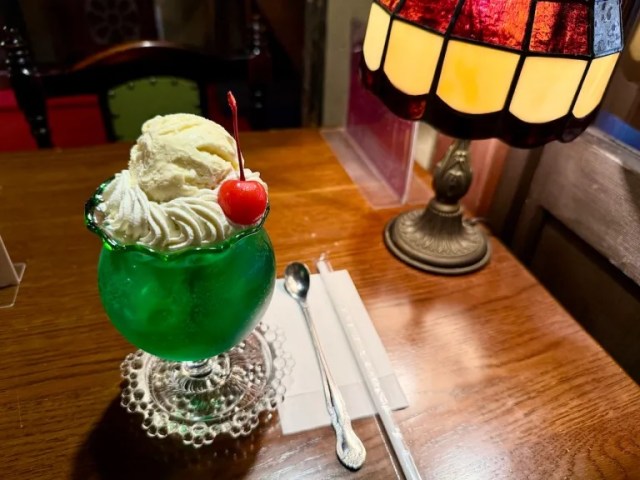
Though the common wisdom in Japan is that a long line means a good restaurant, a shorter line doesn’t mean bad quality, and Masanuki’s drink was delicious, making Kingyoan a great option for someplace a little off the more well-beaten tourist path.
To walk off some of those ice cream calories, Masanuki next strolled over to Utasu Shrine.
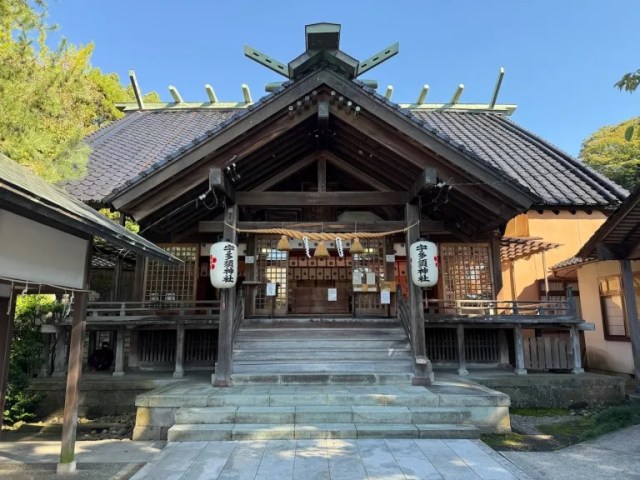
▼ Kingyoan to Utasu Shrine
To the untrained eye, this might look like just another shrine, but with his heightened powers of perception Masanuki was able to spot…
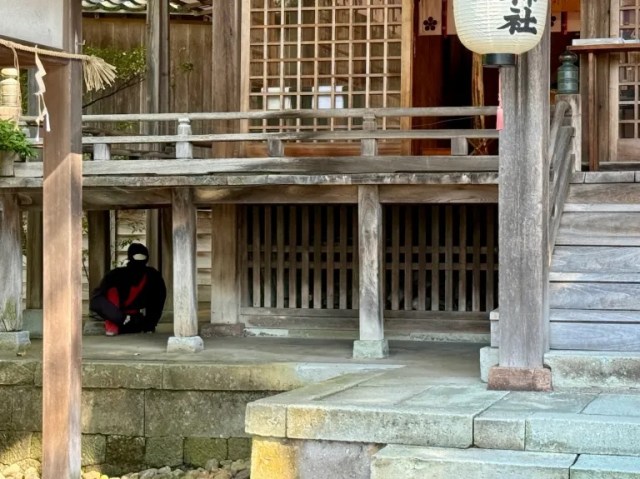
…a ninja underneath the railing?!?
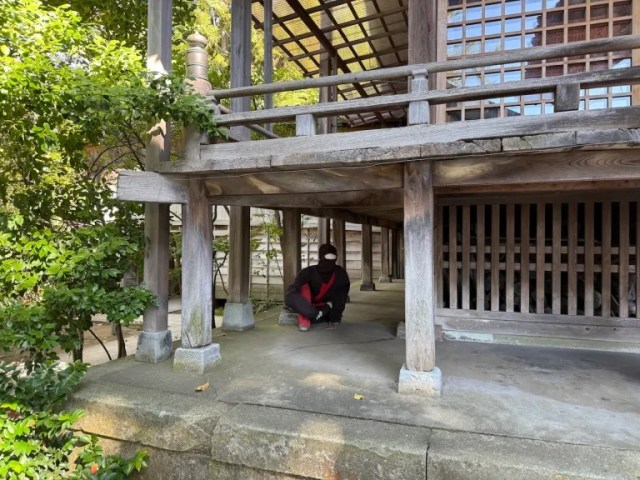
That’s not the only surprise hiding at Utasu either, as the shrine also has an upside-down komainu (guardian dog) on its grounds.
As we mentioned earlier, sashimi and sushi are Kanazawa’s most famous foods, but there’s another dish that locals love too, so Masanuki started walking back towards Omicho Market to make it his next meal. His route took him along the Asanogawa River, which was looking rather picturesque in the long-shadowed sunlight of the late afternoon.
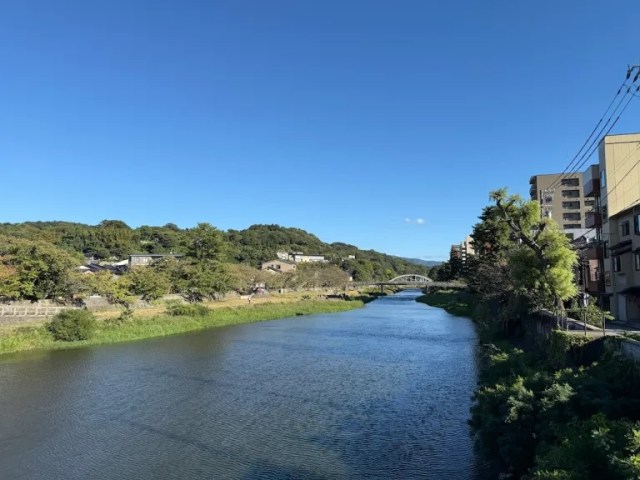
▼ Utasu Shrine to Omicho Market
Back at the market, it was time to try some Kanazawa curry!
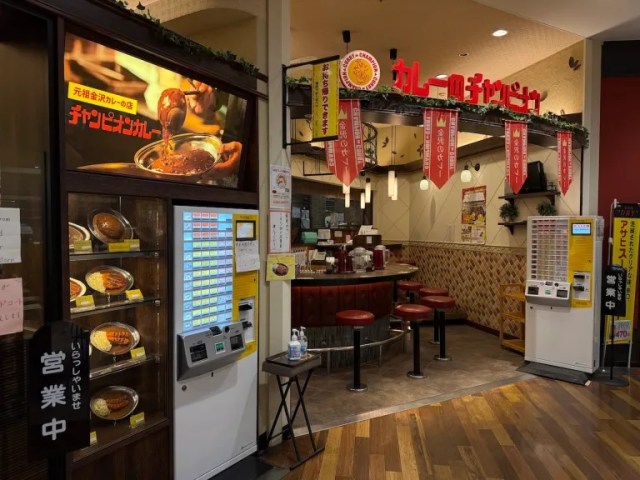
Specifically, it was time to try the curry at Omicho Market’s Curry Champion, the restaurant which is said to have kicked off the Kanazawa curry boom in the 1950s. Kanazawa curry has a thicker, stickier consistency than regular Japanese curry, and it’s accompanied by shredded cabbage. When you order Kanazawa katsu curry, the pork cutlet is served on top of the rice and roux, but is drizzled with tonkatsu sauce, which is similar to a sweet Worcester sauce. Oh, and true Kanazawa curry should always be served on a stainless-steel plate.
▼ It was rich, hearty, and immensely pleasing to Manasuki’s palate.
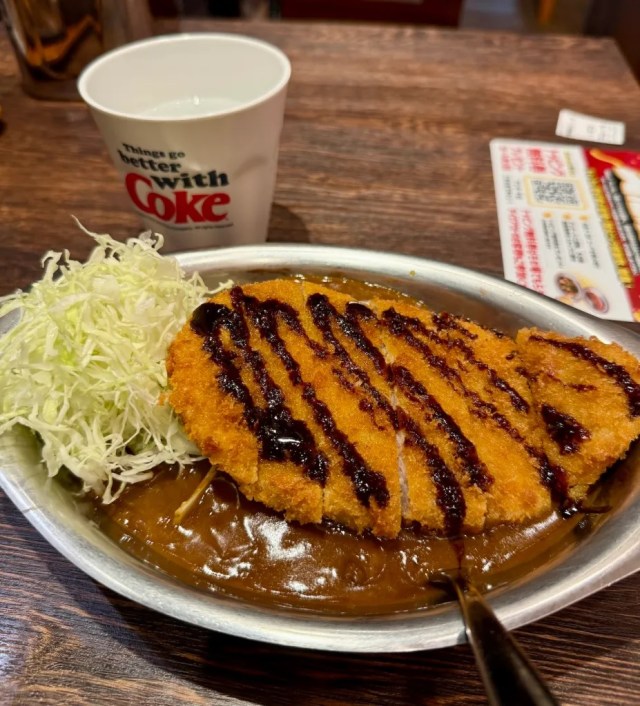
Since it’s good manners in Japan to bring back souvenirs for friends and coworkers after taking a trip, Masanuki decided to pop by Kanazawa Station again to check out what the nearby shops had on offer. While there, he also got to see one of the quirkier local landmarks, Yutaro, the “Mailbox Boy” local mascot who was created in 1954 to commemorate the station’s completion.
▼ The original Yutaro mailbox is outside the station’s west entrance, but you can spot his likeness in other decorations and signs around town too.

Following up on his Taisho-style cream soda break from earlier in the day, Masanuki felt himself being drawn in to this coffee shop called Charuda, which has a Showa-period (1926-1989) feel to it.
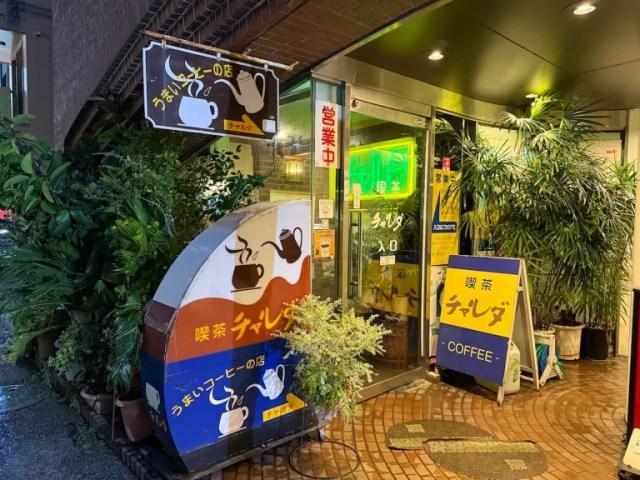
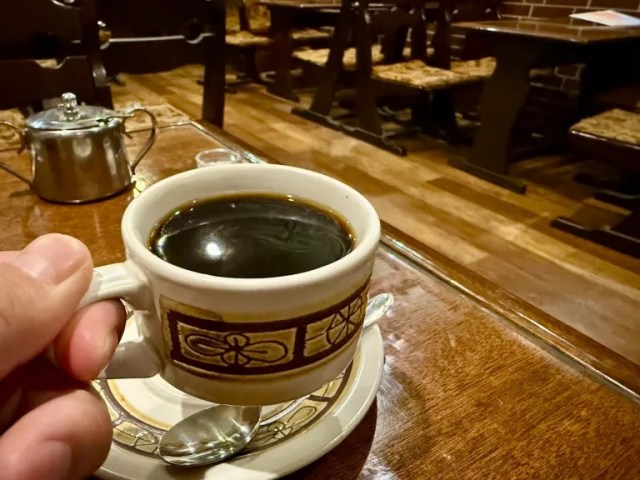
▼ Kanazawa Station to Charuda
And then, as further proof of just how awesome Omicho Market is for foodies, Masanuki went back one more time for some oden and beer to cap his whirlwind tour of the town he’d arrived in that morning.
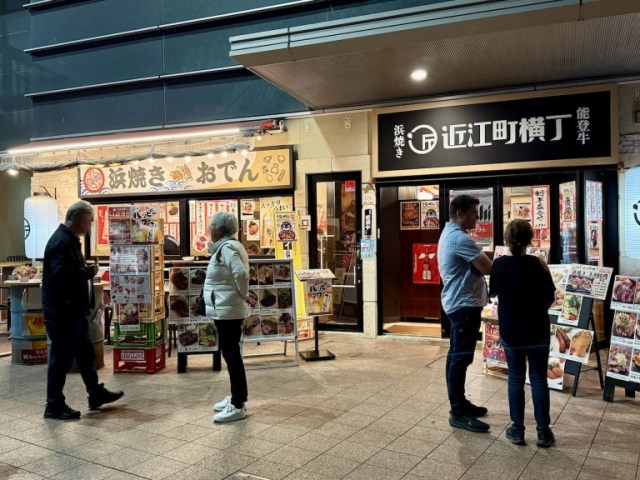
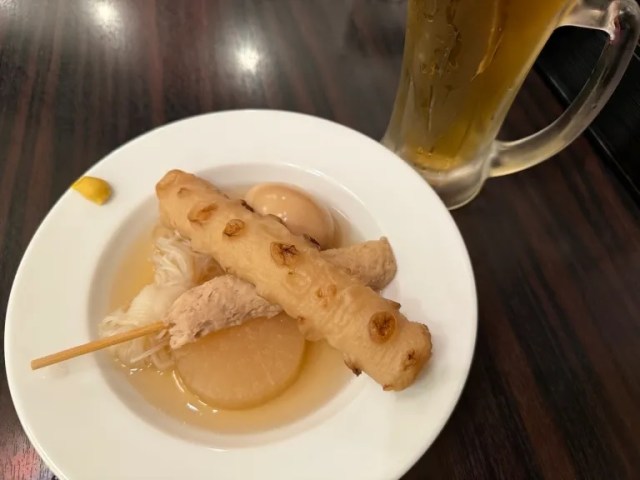
▼ How Masanuki’s day in Kanazawa started…
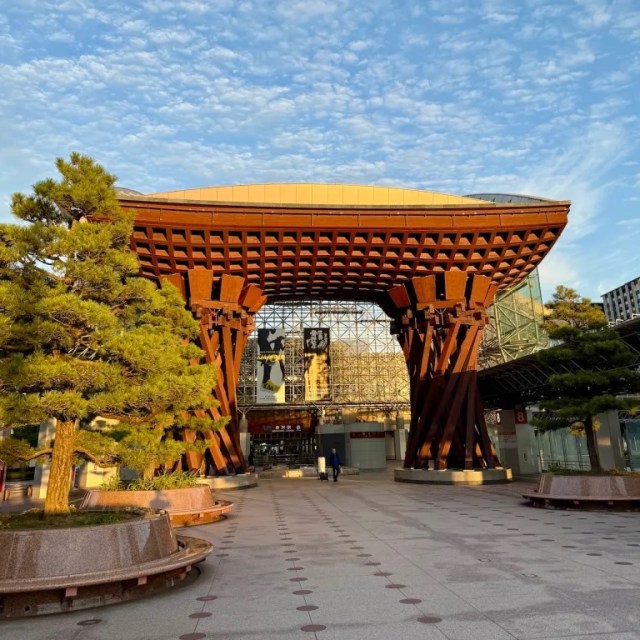
▼ …and how Masanuki’s day in Kanazawa ended.
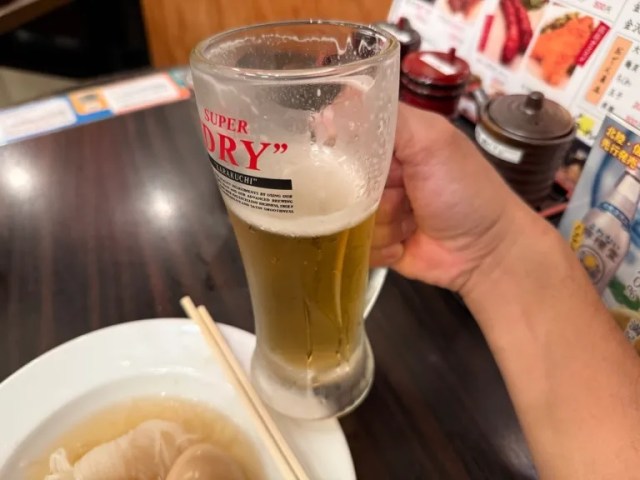
With that, Masanuki still had time to make it back to Kanazawa Station by 9:45 p.m. and catch the opposite route of KB Liner overnight bus he’d ridden here from Tokyo, which would get him back to downtown Tokyo’s Shinjuku Expressway Bus Terminal at 6:15 the next morning for only about 4,500 yen, so yes, it really is possible to travel from Tokyo to Kanazawa, see the sights and eat the delicious foods, and then head back to the capital all without using a train or booking a hotel room.
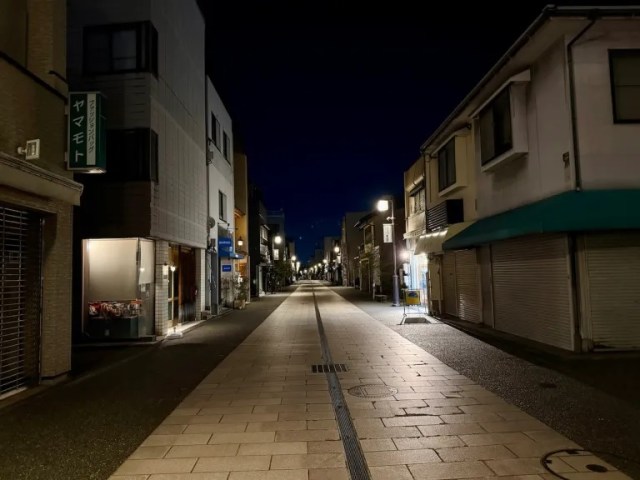
However, if you do want to spend the night in Kanazawa, but still keep your trip very budget-friendly, there’s a way to do that too…
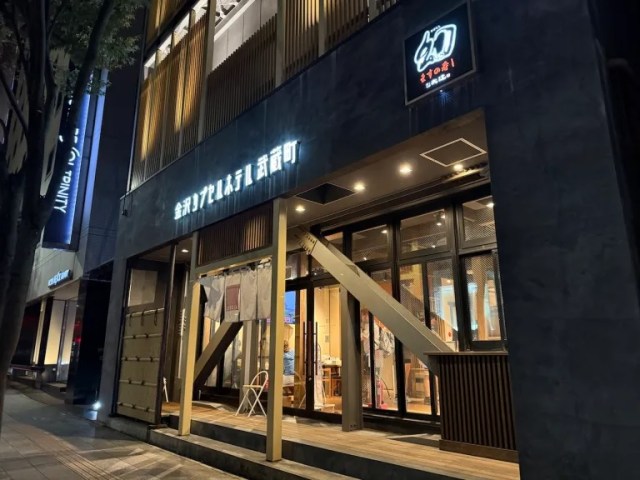
…which you can read all about in Masanuki’s report on the Kanazawa Capsule Hotel Musashimachi, which will put you conveniently close to Omicho Market for breakfast the next morning.
Related: KB Liner website
Photos ©SoraNews24
● Want to hear about SoraNews24’s latest articles as soon as they’re published? Follow us on Facebook and Twitter!
Credit:



0 comments:
Post a Comment